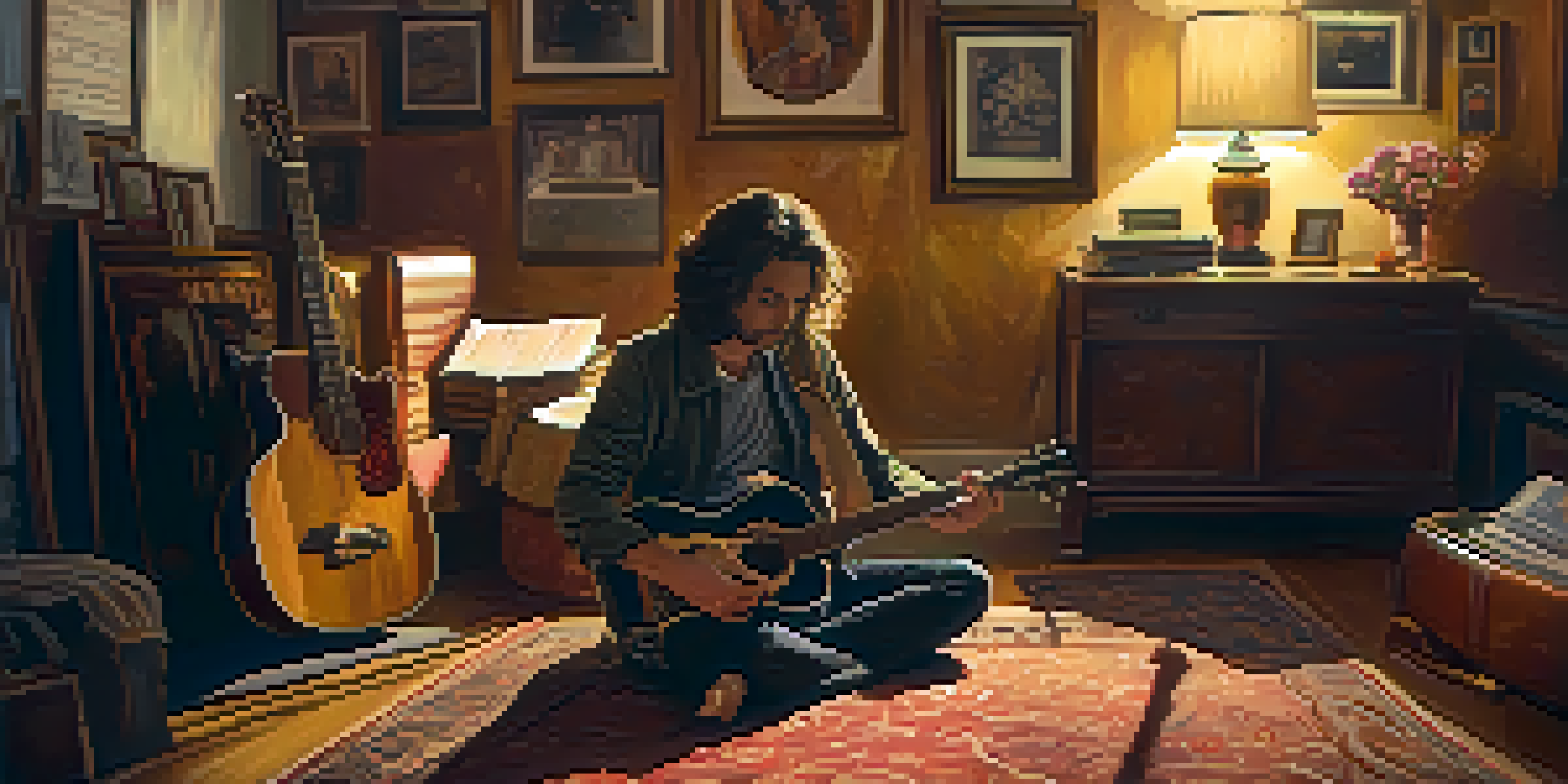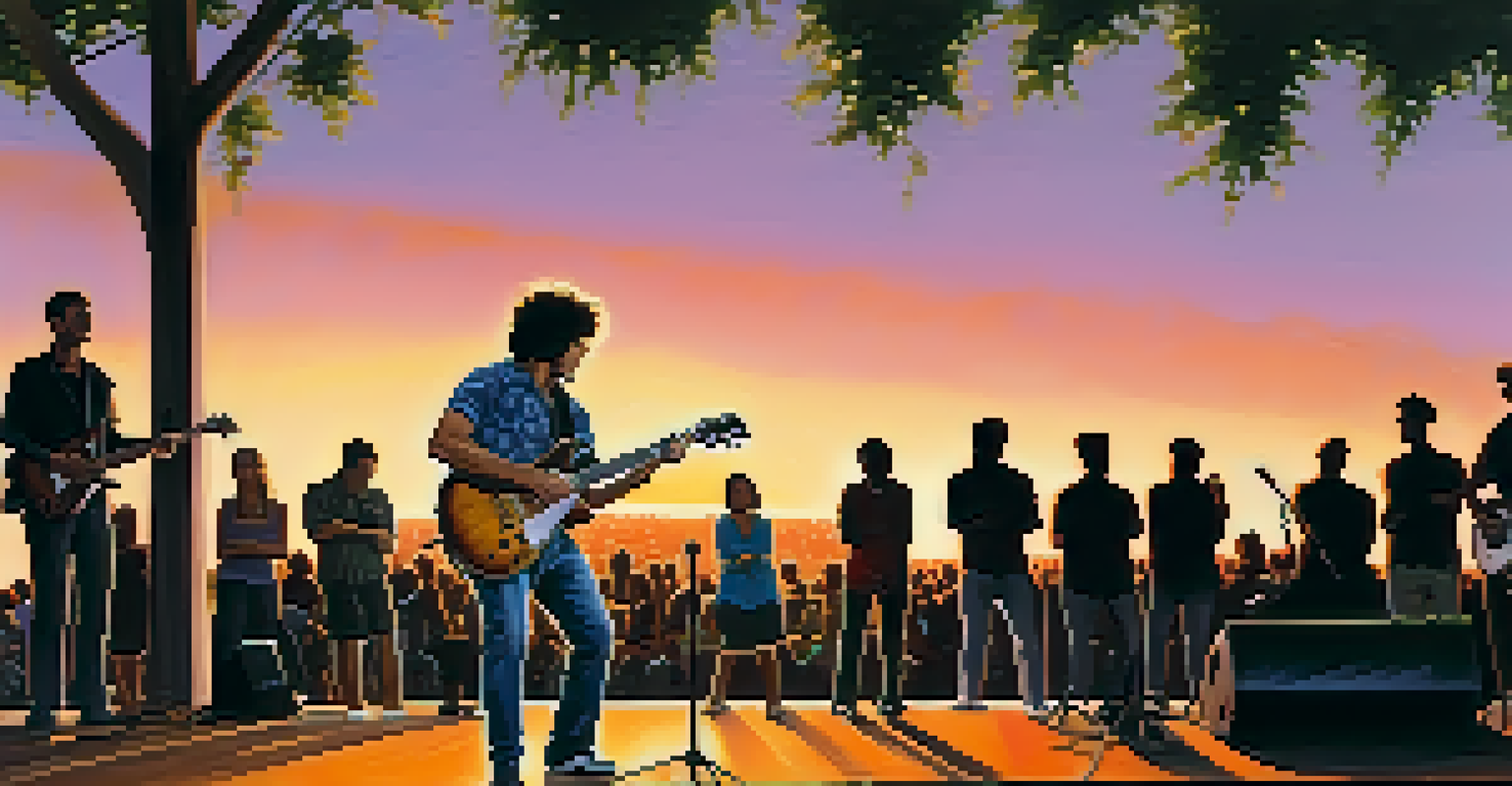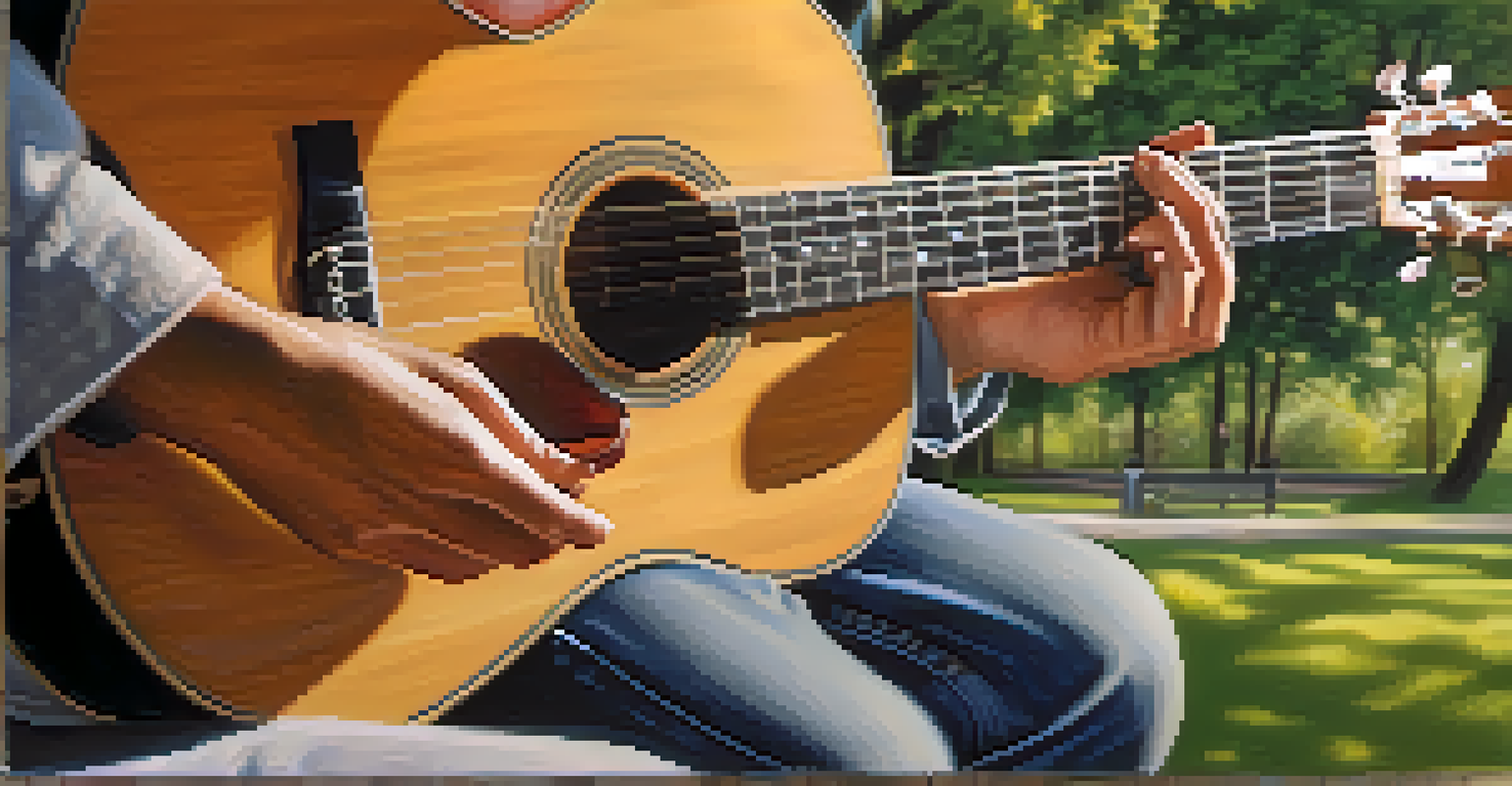Visualization Techniques to Overcome Guitar Performance Anxiety

Understanding Guitar Performance Anxiety
Performance anxiety is a common experience for musicians, especially guitarists. It can manifest as nervousness, fear of judgment, or a loss of focus when performing. Understanding this anxiety is the first step in overcoming it, as it affects not only the performance but also the joy of playing.
The only thing we have to fear is fear itself.
When you feel anxious about performing, your body may react physically—sweaty palms, racing heart, or shaky hands. These symptoms can create a vicious cycle, leading to even more anxiety as you prepare to play. Recognizing that many musicians face this same struggle can help normalize your experience.
Embracing the concept that anxiety is a natural part of performing can be liberating. By accepting your feelings instead of fighting them, you can begin to shift your focus toward positive visualization techniques that help reduce these anxious feelings.
The Power of Visualization in Music
Visualization is a mental technique where you create vivid images in your mind to achieve a desired outcome. In music, this can mean picturing yourself confidently playing your guitar in front of an audience. This technique is widely used by athletes and performers across various fields to enhance performance.

When you visualize your performance, it’s important to engage all your senses. Imagine the sound of your guitar, the feel of the strings, and even the sight of an appreciative audience. This sensory involvement can create a mental rehearsal that conditions your mind for success.
Understanding Performance Anxiety
Recognizing that performance anxiety is common among musicians can help normalize your experience and pave the way for overcoming it.
Regularly practicing visualization can help turn your anxiety into excitement. By mentally rehearsing your performance, you can decrease fear and increase your confidence, making it easier to enjoy the experience of playing.
Creating a Visualization Routine
To effectively use visualization, it’s helpful to establish a routine. Set aside time before your practice sessions or performances to engage in this mental exercise. Consistency is key; the more you visualize, the more natural it will feel when you actually perform.
Visualization is daydreaming with a purpose.
Start by finding a quiet space where you can relax and focus. Close your eyes and take deep breaths to calm your mind. As you breathe, picture yourself in a performance setting, fully immersed in your music and the joy it brings you.
Incorporating this routine into your practice can enhance your overall performance. Over time, you will begin to associate these visualization sessions with positive feelings, helping to diminish the anxiety that often accompanies live performances.
Techniques for Effective Visualization
There are various techniques to enhance your visualization practice. One effective method is to visualize a successful performance from start to finish. Imagine walking on stage, greeting the audience, and playing your guitar flawlessly, feeling the excitement of each note.
You can also visualize overcoming challenges you may encounter, such as forgetting a chord or feeling nervous. By mentally rehearsing how you'll handle these situations, you prepare yourself to respond with confidence when they arise in real life.
The Power of Visualization
Using visualization techniques can transform anxiety into excitement, enhancing your confidence and overall performance.
Another technique is to create a mental 'happy place' associated with music. Picture a serene environment where you feel completely at ease playing your guitar. This can serve as a mental refuge when performance anxiety starts to creep in.
Incorporating Mindfulness with Visualization
Mindfulness and visualization complement each other beautifully. While visualization focuses on future performances, mindfulness encourages you to stay present in the moment. Practicing mindfulness can help ground you, making it easier to visualize without distractions.
You can integrate mindfulness into your visualization routines by starting with a few moments of deep breathing. This practice helps clear your mind and prepares you for effective visualization. As you transition into visualizing, you’ll find it easier to focus and engage with the imagery.
Combining these techniques can create a powerful toolset for overcoming anxiety. When you're present and focused, your visualizations become more vivid, increasing their effectiveness when it’s time to perform.
The Role of Positive Affirmations
Positive affirmations are statements that reinforce your confidence and abilities. Incorporating affirmations into your visualization practice can enhance its effectiveness. For example, repeating phrases like 'I am a skilled guitarist' or 'I enjoy performing' creates a positive mindset.
When you visualize, include affirmations that resonate with you. Speak them aloud or mentally recite them as you picture your successful performance. This combination can help rewire your brain to focus on positivity rather than fear.
Incorporating Daily Practices
Integrating visualization into your daily routine can help reduce performance anxiety and build confidence for live performances.
Over time, these affirmations can become second nature, automatically surfacing during moments of anxiety. By reinforcing your self-belief, you create a mental environment conducive to success, helping you to approach performances with enthusiasm.
Practicing Visualization in Daily Life
Visualization isn’t just for performance preparation; it can be practiced daily. Integrate it into your routine by visualizing your guitar practice sessions or even everyday activities. This can help build a habit that translates well to live performances.
You might visualize tackling challenging pieces during practice or simply enjoying the act of playing. By creating a mental image of success in these everyday scenarios, you’re priming yourself for larger performance situations.

As you become more comfortable with visualization, you’ll likely notice a decrease in performance anxiety. This practice becomes a powerful tool, not just for guitar playing but for various aspects of your life where confidence is key.